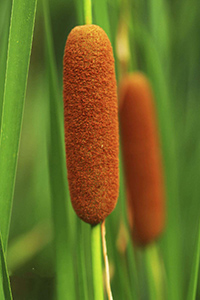Table of Contents

The Cats tail plant is highly sought-after in eastern and southern Spain. Its use has quickly spread during the last decades. It was first used in veterinary medicine to heal wounded animals. After its good results, its use became usual among Mediterranean peasants and cattle breeders.
Cat Tail Plant Scientific Facts
- Spanish: Rabo de gato.
- Environment: This plant grows on unfarmed slopes along the Spanish Mediterranean coast, from Tarragona to Malaga.
- Description: Woody-based plant of the Labiatae family, growing from 20 to 50 cm high. Lemon-yellow flowers grow on the tip of their straight stems.
- Parts of the plant used medicinally: The flower clusters.
Healing Properties and Indications


This plant contains an essence with antibiotic properties, as well as flavonoids with anti-inflammatory properties. It is internally used, with good results, for dyspepsia, gastritis, and gastro-duodenal ulcers. It produces an intense anti-inflammatory effect on the digestive system.
Its most common application is vulnerary: it heals wounds and bruises with astonishing quickness. Cat tail is helpful for any kind of bruises, wounds (infected or not), skin sores, and skin infections.
How to use Cat Tail
- Infusion with 30-40g of flower clusters per liter of water. Drink free or four cups daily.
- Compresses, soaked in the infusion above. Apply on the skin with a soft dressing, and change every three or four hours.
- Cleansings of the affected areas with the same infusion.
Frequently Asked Questions
What are the primary health benefits of this plant?
The plant scientifically known as Typha latifolia, offers numerous health benefits. It’s rich in antioxidants, vitamins, and minerals, aiding digestion, promoting heart health, and boosting immunity.
How does the plant contribute to digestion?
Can the plant help with respiratory issues?
It can be used to alleviate respiratory issues like coughs and bronchitis. It can loosen mucus and make breathing more accessible due to its expectorant properties.
Is the cat tail plant beneficial for cardiovascular health?
Indeed, studies suggest that it may promote cardiovascular health by lowering cholesterol levels and improving blood circulation. Potentially lowering the risk of cardiovascular disease, these effects.
Does the cat tail plant have any anti-inflammatory properties?
The anti-inflammatory chemicals found in cat tail plants can help reduce systemic inflammation; thus, the answer is yes. Arthritis and inflammatory bowel illness are two diseases that can benefit significantly from this.
Can the cat tail plant be used to boost immunity?
The plant is rich in vitamins and antioxidants that support a healthy immune system. Regular consumption may help strengthen the body’s defenses against infections and illnesses.
Are there any potential benefits of the cat tail plant for skin health?
Some sources suggest that the plant’s extracts or oils may have moisturizing and soothing effects on the skin. However, further research is needed to understand its potential benefits for skin healthfully.
Does the cat tail plant have any diuretic properties?
The cat tail plant can help remove extra fluids and toxins from the body due to its moderate diuretic characteristics. It promotes urination. This may be beneficial for individuals with mild edema or urinary tract issues.
Are there any known contraindications or side effects of consuming the cat tail plant?
While the cat tail plant is generally considered safe when consumed moderately, some individuals may experience allergic reactions. It is also recommended that women who are pregnant or nursing talk to their doctor before taking any supplements containing cat tail plant.
How can one incorporate the cat tail plant into their diet or routine?
Cat tail plants can be consumed in various forms, including teas, tinctures, capsules, or added to soups and salads. Using reputable sources and following dosage recommendations is essential to maximize its health benefits.
DISCLAIMER: All content on this website is presented solely for educational and informational objectives. It would be best to not rely on the information provided as a replacement for advice, diagnosis, or treatment from a qualified medical expert. If you are pregnant, nursing, or have any preexisting medical concerns, you should talk to your doctor before using any herbal or natural medicines.
REFERENCES
- George D. Pamplona-Roger, M.D. “Encyclopedia of Medicinal Plants.” George D. Pamplona-Roger, M.D. Encyclopedia of Medicinal Plants. Ed. Francesc X. Gelabert. vols. 2 San Fernando de Henares: Editorial Safeliz, 2000. 471. Print. [cat tail plant]
- Typha latifolia (Broadleaf Cattail) – An Overview.” Plants for a Future. Retrieved from: https://pfaf.org/user/Plant.aspx?LatinName=Typha+latifolia
- “Cattail – Typha latifolia: Uses, Side Effects, Interactions, Dosage, and Warning.” WebMD. Retrieved from: https://www.webmd.com/vitamins/ai/ingredientmono-956/cattail-typha-latifolia
- “Typha latifolia: A Review on Phytochemistry, Ethnobotany, and Pharmacological Aspects.” Journal of Ethnopharmacology, Volume 268. Retrieved from: https://www.sciencedirect.com/science/article/abs/pii/S0378874120345930
- “Broadleaf Cattail.” Herbal Medicine: Biomolecular and Clinical Aspects. 2nd edition. Retrieved from: https://www.ncbi.nlm.nih.gov/books/NBK92758/
- “Typha Latifolia.” Examine.com. Retrieved from: https://examine.com/supplements/typha-latifolia/
